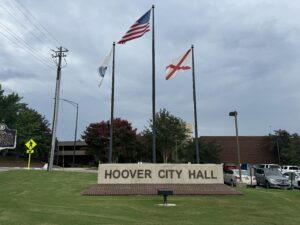Gov. Kay Ivey proposes one-time tax rebates, teacher pay raises
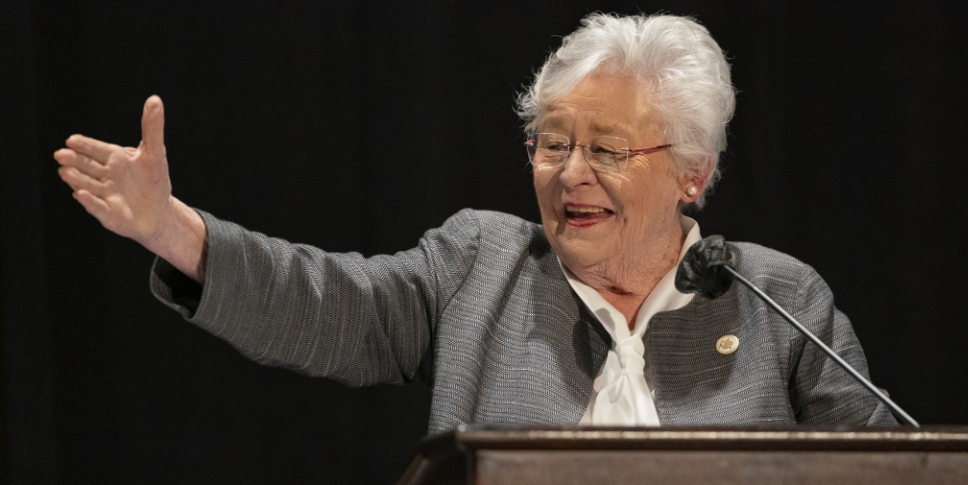
Alabama Gov. Kay Ivey on Tuesday proposed one-time tax rebates of $400 for individuals and $800 for married couples — as well as 2% pay raises for teachers and state employees — as she sent her proposed budgets to lawmakers. The governor submitted the proposed spending plans for the fiscal year that begins Oct. 1 to lawmakers as they resumed the legislative session. Lawmakers will debate the legislation over the next several months, likely accepting some of Ivey’s proposals and rejecting others. “Just as every Alabama family budgets to invest, pay their debts, and increase their savings, my budget proposals do just that for our state. From returning our taxpayers’ hard-earned dollars back to them to making historic investments in our students’ education, these budgets will help foster a strong Alabama today and a stronger Alabama tomorrow,” Ivey said in a statement about the proposed budgets. Legislators this session face decisions on what to do with the rare surplus, including how much to save and how to spend the rest. The state budget that funds education has a $2.8 billion surplus, according to the Legislative Services Agency. The state general fund has a smaller surplus of $351 million. “We believe it is important to provide immediate assistance to families while the state has access to these one-time funds on hand,” Finance Director Bill Poole said of the governor’s rebate proposal. The proposed tax rebates, which Ivey first announced in her State of the State address, are about double what some lawmakers initially discussed. The governor’s rebates would be limited to people who filed state income tax returns. Poole said that was the most efficient way to provide the rebates. Individuals who earned under $4,000 annually and married couples earning less than $10,500 do not have to file returns. The governor has proposed pay raises of 2% for state employees and for educators. Poole said they were trying to provide sustainable pay raises, while also increasing pay. “We know we have a teacher shortage. We know this is a tight labor market. It’s critical educators have career pathways in classrooms,” Poole said. Republished with the permission of The Associated Press.
Lawmakers say prison plan will continue despite cost jump
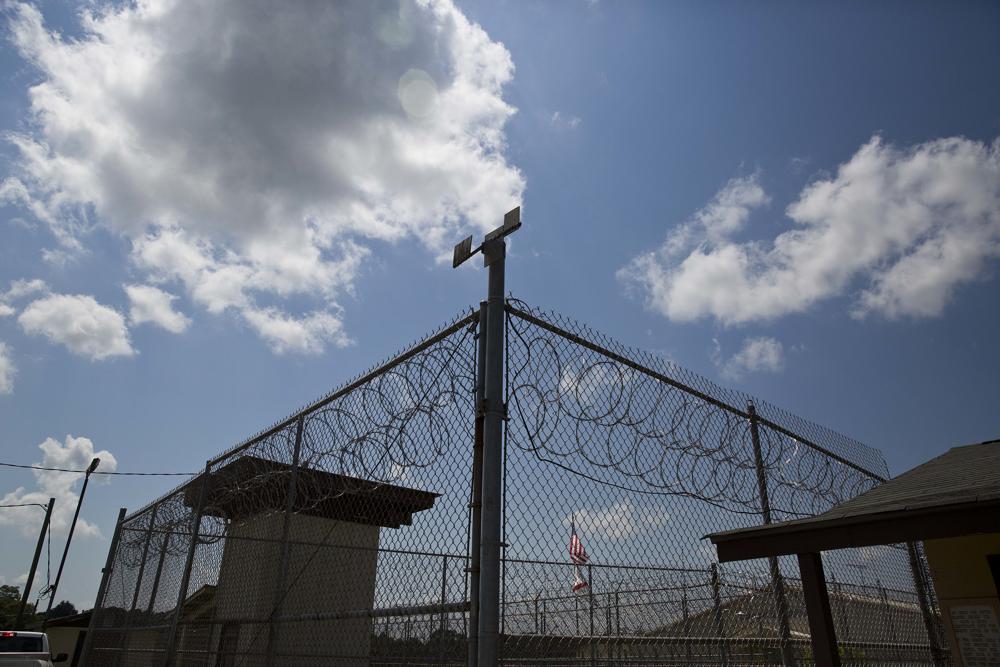
Alabama legislative leaders said Thursday they will proceed with plans to build two super-size prisons, despite the cost estimate for the first one mushrooming to nearly $1 billion. The Alabama Corrections Institution Finance Authority on Wednesday increased the spending cap for the 4,000-bed prison in Elmore County, from $623 million to $975 million. Alabama Finance Director Bill Poole said the change was needed after inflation and design alterations caused the projected cost to rise. “I wish it wasn’t there, but as all of you know, inflation has hit us pretty hard over the last few months, and that’s certainly a reflection of that,” House Speaker Nathaniel Ledbetter told reporters. Asked if the state will be able to build both prisons, Ledbetter said he thinks the state will go forward with the plan. “I mean, there might be some adjustments along the way, but as all of you know, we’ve got to do something,” Ledbetter said in reference to the state’s ongoing prison crisis. Republican Rep. Rex Reynolds, the chairman of the House general fund committee, said he had been warned recently that the increase would be needed. “That’s tough. We didn’t see that coming when we first voted on the bond money,” Reynolds said. Still, the move drew criticism from some Democrats. “Actual prison construction hasn’t even started yet, but we are already up to a billion dollars. We haven’t even started talking about paying for the second prison yet. Add this to the billion dollars we are spending on a prison healthcare contract. This is not sustainable,” Democratic Rep. Chris England wrote in a tweet. Alabama lawmakers in 2021 approved a $1.3 billion prison construction plan that tapped $400 million from the state’s share of federal pandemic relief dollars to help build two super-size prisons, including the one in Elmore County and a second one in Escambia County. The U.S. Department of Justice has an ongoing lawsuit against Alabama, accusing the state of violating the constitutional rights of male prisoners in a system “riddled with prisoner-on-prisoner and guard-on-prisoner violence.” The Justice Department noted in an earlier report that dilapidated facilities were a contributing factor to the unconstitutional conditions but wrote, “new facilities alone will not resolve” the matter because of problems with management deficiencies, corruption, violence, and other issues. Republished with the permission of The Associated Press.
Cost estimate on new Alabama prison jumps $300 million

An Alabama prison finance authority on Wednesday increased what the state can spend on building a new 4,000-inmate prison in Elmore County after inflation and design changes have caused cost estimates to rise, a state official said. The Alabama Corrections Institution Finance Authority voted to increase the authorized spending on the project from about $623 million to $975 million. Alabama Finance Director Bill Poole said the change was needed after inflation and design alterations increased cost projections. “Can you spell inflation?” Republican Sen. Greg Albritton, a member of the authority, said when asked about the increase. “Every construction project that we have that is ongoing is experiencing this same phenomenon.” Alabama lawmakers in 2021 approved a $1.3 billion prison construction plan that tapped $400 million from the state’s share of American Rescue Plan funds to help build two super-size prisons, including the one in Elmore County. Another prison is planned to be built in Escambia County. The move drew criticism from congressional Democrats at the time, who said the pandemic relief money was not intended to build prisons. The prison in Elmore County will house at least 4,000 inmates and offer space for medical and mental health care treatment. Alabama officials last year signed a $623 million contract with Caddell Construction Co. for the construction. Poole said that the initial cost estimate was “based on very early design.” “We’ve increased, for instance, the education and vocational space. There have been other scope and parameters that have changed. Inflation has had a significant impact on construction costs, as is seen across all economic sectors,” Poole said. He said the state should have a final price this summer. Albritton said he believes the construction project is the best option for the state despite the increase in cost. “The prisons that we’ve got are falling apart. We’ve got to do something. It’s better to execute the plan that we’ve got than try to start over,” Albritton said. The prison construction plan has been criticized by some members of the Alabama Legislature. Alabama lawmakers are meeting in a special session to decide how to use the remainder of money the state received from the American Rescue Plan. Democratic Rep. Juandalynn Givan said during debate Tuesday that the state has many needs that could be helped by the relief dollars, but lawmakers instead spent hundreds of millions of dollars for “prisons that we haven’t built yet.” Republished with the permission of The Associated Press.
State legislature discusses use of American Rescue Plan funds
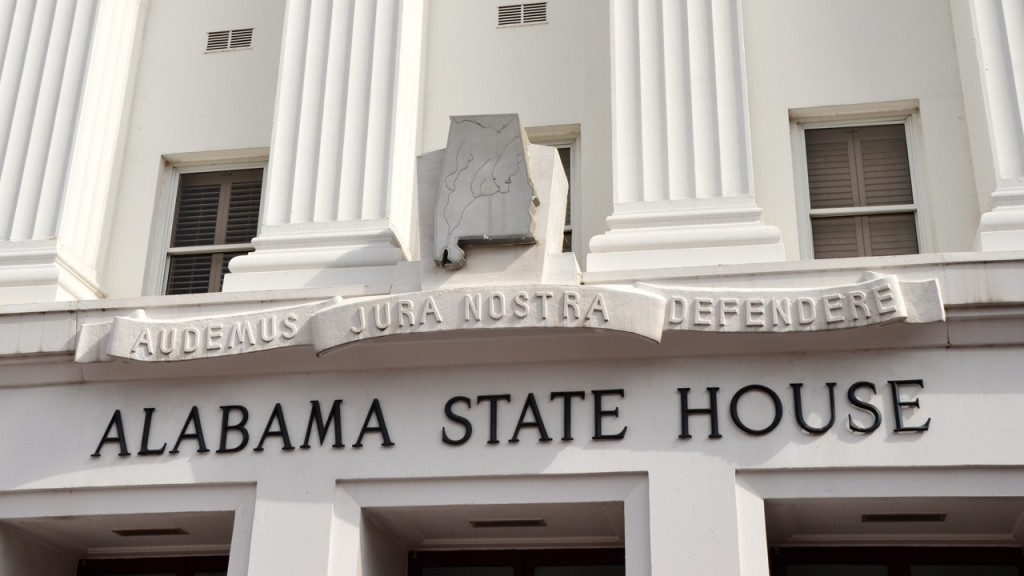
On Tuesday, the Joint Legislative Committee met to review state officials’ progress in spending the first billion dollars from the American Rescue Plan Act (ARPA) money. The state received this funding from the federal government to fight the COVID-19 global pandemic and make the state more resilient against future pandemics. State Sen. Greg Albritton presided over the meeting at the Statehouse across the street from Alabama’s historic Capitol Building. “This is not dealing with the General Fund or the Education Fund,” Sen. Albritton said. “It is not even dealing with ARPA 2 money. This is the Oversight Committee for the ARPA 1 money.” Kirk Fulford is the director of the Alabama Legislative Services Agency (LSA) fiscal division. “There were three tranches of federal money,” Fulford explained. “The first tranche was CARES Act which has mostly been appropriated. This is a total of several bills, not just the three.” “The funds must be spent by December 31, 2026,” Fulford said. “Alabama was appropriated $2.12 billion.” Fulford explained that Counties and cities of 50,000 people or more had already gotten their own money directly from the federal government. Smaller cities had to go through a grant program administered by the state. The state’s first tranche of money arrived in June 2021—the second in July 2022. The law requires the money to be split. “We treated this money separate and apart from either of our budgets due to the reporting requirements in how this money is utilized,” Fulford explained. Fulford explained that the Legislature had appropriated $225 million for water and sewer projects and $51 billion for broadband. $536 million of the money replaced lost state revenues due to the global pandemic. That money had fewer federal restrictions on how that could be spent. The state spent $400 million to build new prisons in Elmore and Escambia Counties. There will be no revenue replacement in the second tranche. Fulford explained that the state would have to stay within the specific guidelines outlined by the treasury with all of the second tranche of money. That money has not been appropriated yet. “You used $277 million for broadband infrastructure thus far,” Fulford said. “It doesn’t look like we are going to have any revenue replacement money going forward. Of the $953 billion appropriated to states, $223 billion was for lost revenue replacement.” Former State Rep. Bill Poole is now the state finance director. “We will be tightly bound to the ARPA guidance, unlike Round 1,” Poole said. “We have encountered many folks come to us and say that this state used their ARPA funds to fund this project or that,” Poole said. “That usually comes out of their Revenue Replacement funds.” Poole said the state does not qualify for any more Revenue Replacement funds, so there are fewer options for the tranche two money. “Quarterly reports are due every quarter,” to the federal government. Poole said, “That has been a substantial ordeal, and it will continue to be going forward. The federal reporting requirements are extremely complex.” In addition to the $400 million for prison construction money, the state Legislature has appropriated $80 million for hospitals and nursing homes. In 2022, the Legislature made an additional appropriation of $80 million for hospitals and nursing homes. “Those funds have been distributed,” Poole explained. “Alabama is eligible for $192 million for capital projects,” Poole said. “We were very pleased to see those (the state’s plans) approved by the Treasury. We hope to direct a substantial portion of the funds, if not all, to broadband.” “The state of Alabama has received no negative audit findings on ARPA funds,” Poole added. “The administrative costs have been held below one percent.” “Local governments and cities are receiving notices of audits in terms of CARES Act funds,” Poole announced. “If you don’t have a clear report, you are going to get an audit finding. You need to be able to show a positive outcome from the funding.” To connect with the author of this story or to comment, email brandonmreporter@gmail.com.
Kay Ivey meets with legislative budget chairs
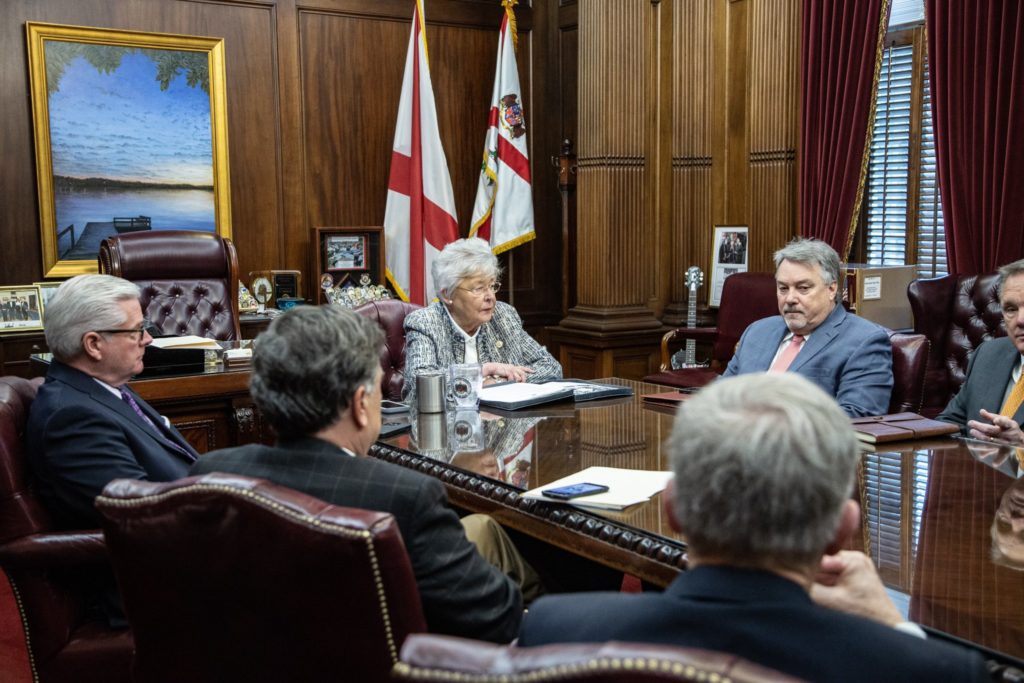
Gov. Kay Ivey met with legislative leaders on Wednesday to discuss the 2024 budgets and potential 2023 supplemental appropriations. “Today, we had our first meeting of the new term with our legislative budget chairs,” said Gov. Ivey. “How we budget will affect Alabamians for decades to come, and this group of leaders is committed to ensuring we will continue taking a fiscally conservative approach to our budgets.” Republicans have commanding control of Alabama state government, so all of the legislative leaders at Wednesday’s meeting were members of the GOP. They include new Speaker of the House Nathaniel Ledbetter, new Chairman of the House Ways and Means General Fund Committee Rex Reynolds, Chairman of the House Ways and Means Education Committee Danny Garrett, Ivey’s Director of Legislative Affairs Drew Harrell, State Finance Director Bill Poole, State Senate Finance and Taxation General Fund Committee Chairman Greg Albritton, State Finance and Taxation Education Committee Chairman Arthur Orr, and Senate Pro Tem. Greg Reed. Legislative Service Agency Fiscal Division Director Kirk Fulford, the Pro Tem.’s chief of staff Derek Trotter, and other staff members were also present. “Yesterday the Leadership of the House and Senate, and the Budget Chairman’s met with Governor Ivey, Director Poole and staff,” Reynolds said on social media. “The Governor engaged the meeting with direct questions related to our economy, our workforce, and the services the state provides to Alabamians.” The big-budget question hanging over the coming legislative session is what to do with the budget surplus. The state had over a billion dollar surplus left over from fiscal year 2022, which ended on September 30 that rolled into fiscal year 2022. Alabama has an arcane budgeting system where education goes into one budget – the education trust fund budget (ETF) for education spending and the state general fund (SGF) for non-education-related expenditures. Last year, the ETF for FY2023 passed by the Legislature was $8.26 billion – $589 million more than FY2022. The SGF for FY2023 passed was $2.74 billion – $53 million more than FY2022. Both are all-time records. The state’s reserve funds are already flush with funds from four straight years of conservative budgeting. With wages rising and the number of workers employed at an all-time high, the state is likely to take in more than the $11 billion the Legislature expected in FY2023 – the current budget year. The Legislature has some hard choices to make when the 2023 regular legislative session begins on March 7. They likely will have significant surplus funds left over for supplemental appropriations in FY2023 – they had over a billion dollars in supplementals in FY2022. Leaders could increase state spending, rebate surplus dollars to the taxpayers in one-time checks, or lower taxes in FY2024. Orr said that the Legislature may rebate up to $500 million back to taxpayers later this year. Another major issue facing the budget committees is what to do with all the American Rescue Plan Act (ARPA) money that the state is getting from the federal government – albeit with many federal strings attached. The second $one billion of that money has to be appropriated. The Governor will formally make her FY2024 budget requests on Tuesday, March 7, when she makes her state of the state address to a joint session of the Alabama Legislature at the historic 1859 Alabama Capitol Building. To connect with the author of this story, or to comment, email brandonmreporter@gmail.com.
Innovate Alabama forms Council on Outdoor Recreation
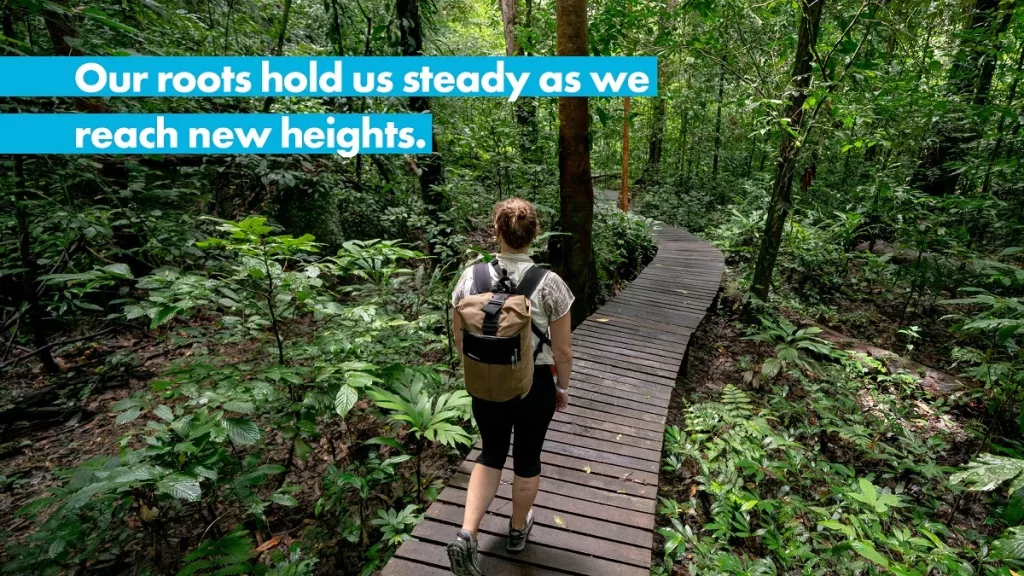
Alabama residents and visitors have long recognized and enjoyed the state’s natural resources, and a new group of leaders wants to leverage those same assets to help benefit and grow the state. Innovate Alabama has established the Council on Outdoor Recreation to advise the board of directors on strategies to achieve three primary goals: expand Alabama’s outdoor recreation industry, enhance the state’s attractiveness for a skilled workforce, and yield substantial returns for rural and urban communities for the enjoyment of current and future Alabamians. The council is supported by the Outdoor Recreation Advisory Roundtable, comprised of 19 stakeholders that represent diverse and comprehensive perspectives from various regions of the state and outdoor recreation fields. The roundtable, which met for the first time November 30, will provide recommendations for capitalizing on Alabama’s recreational assets as innovative economic development tools. “Made up of some of our state’s strongest outdoor recreation experts, the Outdoor Recreation Advisory Roundtable brings together centuries of combined knowledge in the outdoors to provide strategic recommendations on the application of outdoor recreation to enhance Alabamians’ quality of life and support economic development in rural and urban communities,” said Chris Blankenship, Alabama’s commissioner of Conservation and Natural Resources and the chair of the Council on Outdoor Recreation. “We are thrilled to welcome these advisory members who will ensure that all regions of the state and outdoor recreation sectors have a seat at the table as we develop these recommendations.” In 2021, Innovate Alabama joined forces with former U.S. Secretary of State and Alabama native Condoleezza Rice and Stanford University’s Hoover Institution to conduct extensive research into fostering a robust, inclusive economy in Alabama. The research, which culminated in a final report, highlighted the opportunity to leverage Alabama’s natural resources to help attract innovators and encourage them to grow roots in the state. Out of that research, the Council on Outdoor Recreation was formed. “A thriving business ecosystem is holistic,” said Kellie Clark, CEO of AppThink and a roundtable member. “It considers the interest, hobbies, and well-being of entrepreneurs and their families. People build businesses in Alabama, in part, because of our outdoor recreation assets and landscape diversity. Our natural resources – a true advantage that helps us continue to recruit and retain top talent – differentiates us from other innovation-forward states.” “As an outdoor enthusiast and innovation advocate, I am proud to serve alongside fellow subject matter experts who are all focused on creating inclusive, thoughtful solutions through the lens of outdoor recreation that will enrich our innovation ecosystem,” Clark said. Innovate Alabama is working to leverage the state’s broad array of outdoor assets, such as local and state parks, diverse landscapes, and other natural resources, in an effort to showcase and cultivate Alabama’s unique offerings. Advocates say greater investment in these assets, which make Alabama special, will lure and encourage entrepreneurs, both local and from other states, to put down roots in the state. “We are seeing great success by aligning innovation with our outdoor recreation efforts,” said John Kvach, executive director of Singing River Trail and a roundtable member. “Thanks to Alabama’s unique outdoor landscape and outdoor recreation assets, we have the potential to strengthen regional bonds between rural and urban communities to create a thriving statewide innovation ecosystem.” Members of the Council on Outdoor Recreation and the Outdoor Recreation Advisory Roundtable include: Council on Outdoor Recreation Outdoor Recreation Advisory Roundtable Republished with the permission of The Alabama NewsCenter.
Steve Flowers: Jo Bonner inaugurated as president of University of South Alabama
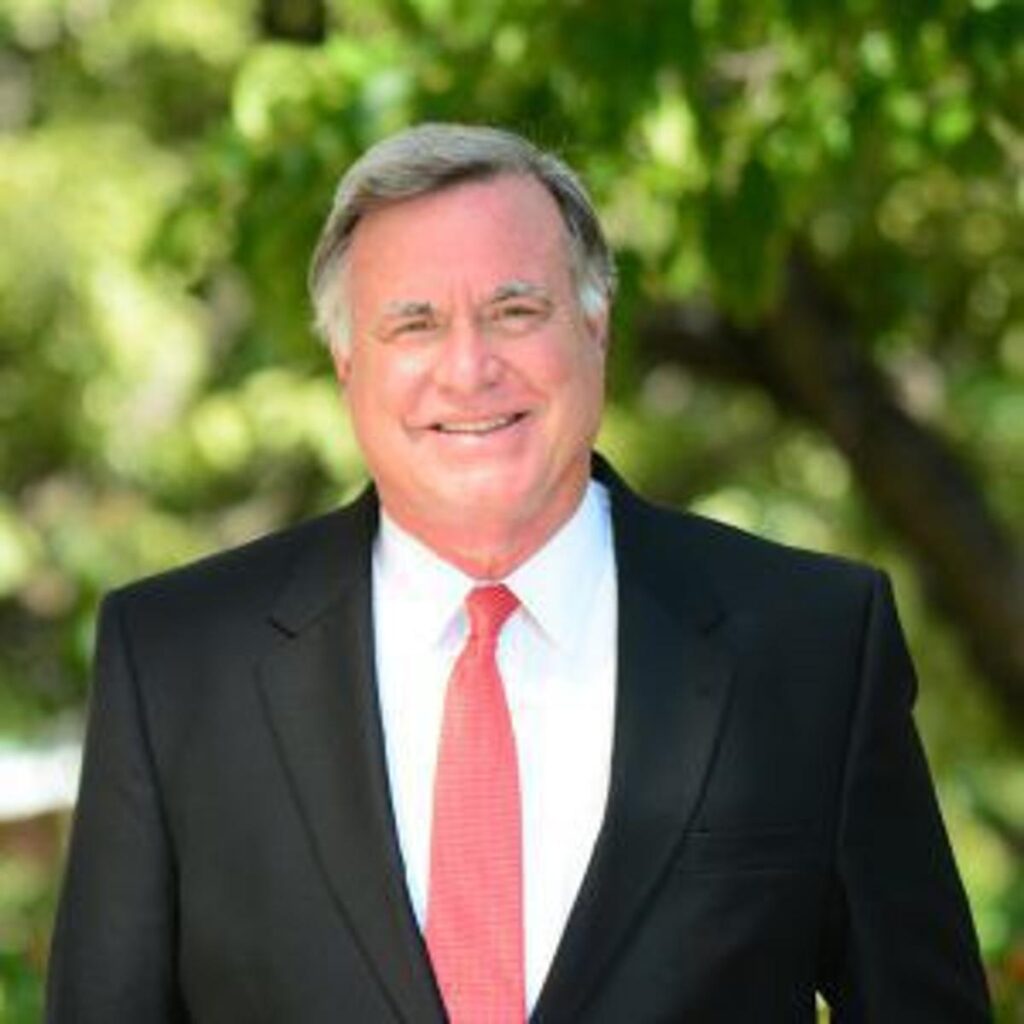
Jo Bonner was officially sworn in as the fourth president of the University of South Alabama on September 23, 2022. The University of South Alabama is the crown jewel and flagship of the Alabama Gulf Coast. It is a sprawling, manicured, beautiful, and functional modern campus. It is currently the third-largest university in the state. Under the leadership of President Jo Bonner, it will grow and prosper to where within the next decade, it will be thought of as one of our premier “Big Three” major flagship universities along with the University of Alabama and Auburn University. Its location as the only major university in the populous metropolitan Mobile/Baldwin growth area of our state, coupled with having the University of South Alabama Medical School and Center on the campus, portends for exponential growth and prosperity for the University of South Alabama. The prosperity of USA is assured by the selection of Josiah R. Bonner, Jr. as President. Over the next decade, he will be thought of in the same terms and same breath as the legendary founding President of USA, Frederick Whiddon, who oversaw the first 35 years of USA. There has never been a more perfect selection to be the leader of a major university in our state than the appointment of Jo Bonner as President of USA. His knowledge of the business, civic, and social community of the Mobile/Baldwin area is unique. Through his decade of service as their congressman, he is an integral part of the Mobile community. He left Congress with the highest regard and admiration. He was so well respected by his congressional colleagues that he was Chairman of the U.S. House Ethics Committee. You can be assured that there is no university president, lobbyist, or board of trustee member who can walk the halls of Congress and bring home the bacon from the limitless federal trough than Josiah Bonner, Jr. You can also rest assured that there is no university president in the state that has the clout and reverence on Goat Hill in Montgomery than Josiah Bonner, Jr. This is a very unique and perfect blend for prosperity and growth for USA. It is well known in political circles that Jo Bonner is Governor Kay Ivey’s closest confidante. He served as her Chief of Staff for four years. Their families go back as friends and relatives in Wilcox County for generations. Jo Bonner’s father, the first Josiah Bonner, was Probate Judge of Wilcox County. Jo is the baby of the family, a good 15 years younger than his brother, Jim, who grew up as friends and in school together with Governor Kay Ivey. Jo’s sister, Judy, and Senator Jeff Sessions were in school together in grades K-12, then Jo came much later. The aforementioned sister, Judy Bonner, was President of the University of Alabama. Never before in Alabama’s history has there been two siblings being presidents of major universities in Alabama. Jo Bonner actually became President of USA in January. The official inaugural event was on September 23. It was a magnificent program. Governor Ivey gave the keynote address. She beamed with pride as she talked about her “little brother” from Wilcox County. Dr. Jack Hawkins, the 30-year Chancellor of the Troy University System, gave a brilliant address. He spoke for all of the university presidents in the state as the Dean of University Presidents. Jo Bonner’s family was recognized, beginning with his sister, President Judy Bonner. His wife, Janee, along with his two outstanding children, son Robin, and daughter Lee, were in attendance. The Inaugural Event was held in the magnificent Mitchell Center. The Mitchell family has been a major benefactor to USA. Mrs. Arlene Mitchell is Chairman of the Board of Trustees. Another Board of Trustees member is Dr. Steve Stokes, a radiology oncologist from Dothan. He and his wife Angela have been generous donors to USA, also. Stokes Hall is the newest dorm on campus. It was truly fitting that Jo Bonner had a throng of political dignitaries attend his Inaugural Event. It was like a political gathering of Who’s Who in Alabama politics visiting on the floor of the Mitchell Center prior to Jo’s inauguration. The list of attendees is too long to enumerate. However, in addition to Governor Ivey was Mac McCutchen, John McMillan, John Merrill, Bobby Singleton, Vivian Figures, Young Boozer, Bill Poole, Twinkle Cavanaugh, Sandy Stimpson, Will and Liz Filmore, Cathy Randall, Gordon and Ellen Stone, Jim Purcell, Victor Gaston, Chip Brown, Margie Wilcox, Alan Baker, and Judge Sarah Stewart, just to name a few. They were all there to honor a man who is revered and respected in Alabama – Josiah “Jo” Bonner. Steve Flowers is Alabama’s leading political columnist. His weekly column is read in over 60 Alabama newspapers. Steve served 16 years in the state legislature. Steve may be reached at www.steveflowers.us.
Kay Ivey announces launch of small business grant program
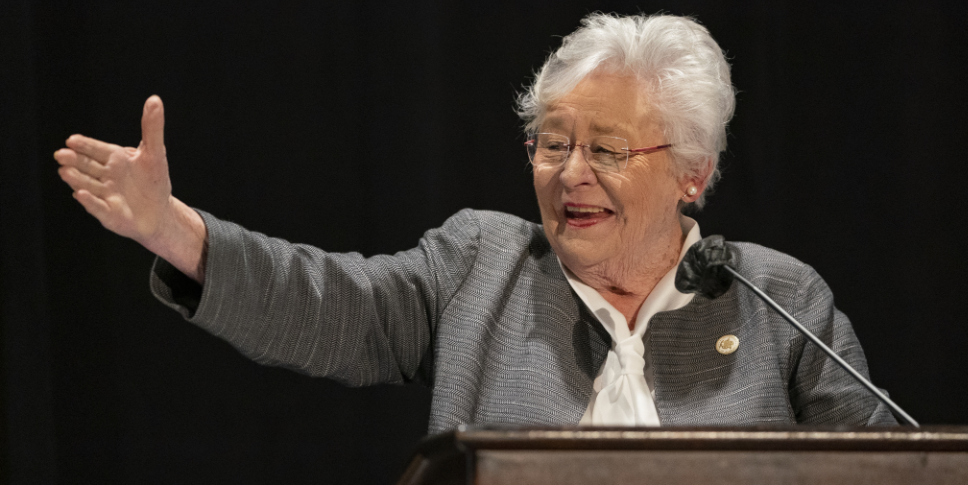
Alabama Governor Kay Ivey announced last Tuesday, that the Alabama Innovation Corporation (Innovate Alabama) opened applications for the Innovate Alabama Supplemental Grant Program. “The Innovate Alabama Supplemental Grant Program is the latest way our state is creating an attractive business environment for pioneering ideas that will change our world,” said Governor Ivey. “Alabamians have the grit, determination, and creativity to make these ideas a reality, and with Innovate Alabama’s supplemental funding, these small businesses will take their ideas from concept to commercialization.” Alabama-based recipients of Phase I and Phase II Federal Small Business Innovation Research (SBIR) and Small Business Technology Transfer (STTR) grants are eligible to apply for up to $250,000 in supplemental funding. The Governor’s office said in a release that helping the state’s leading entrepreneurs and innovators disperse these funds will grow Alabama’s economy by stimulating research and commercialization, developing exportable products and services, and creating and retaining high-wage jobs in skilled occupations. Bill Poole, who was appointed the State Finance Director in July of 2021, is the chairman of the Alabama Innovation Corporation. “Accessible capital is routinely among the greatest needs of our state’s entrepreneurs,” said Poole. “Innovate Alabama wants to bridge connections and resources like this grant program to support these innovative small businesses generating transformative research and technology.” State Senate President Pro Tempore Greg Reed is the vice chair of the Alabama Innovation Corporation. “The Innovate Alabama Supplemental Grant Program is the product of intentional collaboration between Alabama’s innovation ecosystem and my colleagues in the Alabama Legislature,” said Sen. Reed. “We passed legislation last year to pave the way for this program, and I am proud to see it come to fruition.” According to a 2021 report by the U.S. Small Business Administration, Alabama and 19 other states have now implemented robust supplemental grants for both Phase I and Phase II SBIR/STTR winners. Dr. Michael Chambers is the Associate Vice President for Research at the University of South Alabama and serves on the board of the Alabama Innovation Corporation. “Small businesses that have secured SBIR/STTR grants from federal agencies benefit from their technologies already having been subject to scientific review from experts,” said Dr. Chambers. “Alabama’s supplemental funding program is an excellent way for our state to grow our economy by investing in local technologies that may have global impacts.” Eligible applicants have to have an active Phase I or Phase II SBIR or STTR grant. Phase I recipients are eligible to apply for 50% of their award up to $100,000. Phase II recipients are eligible to apply for 50% of their award up to $250,000. Innovate Alabama Supplemental Grant Program awards are non-dilutive, meaning businesses receive the money without giving up shares of their company. Some conservatives have philosophical objections to programs such as this as attempts by the government “to pick winners and losers” in the economy. Some on the left claim that it is “corporate welfare.” There is, however, broad bipartisan support for increasing access to capital and providing economic incentives to grow the economy. There will be a virtual two-day workshop on how to apply for SBIR and STTR grants on August 30 and 31. The first round of grant funding opened on July 1, and the first round of grant awards will be announced on August 22. According to the Governor’s office, the Alabama Innovation Corporation (Innovate Alabama) is Alabama’s first statewide public-private partnership focused on entrepreneurship, technology, and innovation. The Board of Directors was appointed in December 2021 to implement the initiatives and recommendations set forth in the Alabama Innovation Commission’s report, including forward-thinking policies that will create a more resilient, inclusive, and robust economy to remain competitive in a 21st-century world. The Alabama Innovation Corporation is made up of a board of 11 ex-officio and at-large innovation leaders appointed by Gov. Ivey, collaborating across sectors to advance industries, drive technology and facilitate an environment where innovation and entrepreneurship thrive. You can learn more about Innovate Alabama at www.innovatealabama.org To connect with the author of this story, or to comment, email brandonmreporter@gmail.com
Kay Ivey announces Innovate Alabama’s small business grant program

Today, Gov. Kay Ivey announced that the Alabama Innovation Corporation (Innovate Alabama) opened applications for the Innovate Alabama Supplemental Grant Program. Alabama-based recipients of Phase I and Phase II Federal Small Business Innovation Research (SBIR) and Small Business Technology Transfer (STTR) grants are eligible to apply for up to $250,000 in supplemental funding. Innovate Alabama is Alabama’s first statewide public-private partnership focused on entrepreneurship, technology, and innovation. The Board of Directors was appointed in December 2021. Their goal is to implement the initiatives and recommendations set forth in the Alabama Innovation Commission’s report. “The Innovate Alabama Supplemental Grant Program is the latest way our state is creating an attractive business environment for pioneering ideas that will change our world,” stated Ivey. “Alabamians have the grit, determination, and creativity to make these ideas a reality, and with Innovate Alabama’s supplemental funding, these small businesses will take their ideas from concept to commercialization.” According to a 2021 report by the U.S. Small Business Administration, Alabama is now among 20 states that have implemented supplemental grants for both Phase I and Phase II SBIR/STTR winners. “Accessible capital is routinely among the greatest needs of our state’s entrepreneurs,” said Alabama Director of Finance and Alabama Innovation Corporation Chair Bill Poole. “Innovate Alabama wants to bridge connections and resources like this grant program to support these innovative small businesses generating transformative research and technology.” “The Innovate Alabama Supplemental Grant Program is the product of intentional collaboration between Alabama’s innovation ecosystem and my colleagues in the Alabama Legislature,” said state Sen. Greg Reed, President Pro Tempore of the Alabama State Senate and Vice-Chair of the Alabama Innovation Corporation. “We passed legislation last year to pave the way for this program, and I am proud to see it come to fruition.” Eligible applicants have an active Phase I or Phase II SBIR or STTR grant. Phase I recipients are eligible to apply for 50% of their award up to $100,000. Phase II recipients are eligible to apply for 50% of their award up to $250,000. Innovate Alabama Supplemental Grant Program awards are non-dilutive, meaning businesses receive the money without giving up shares of their company. “Small businesses that have secured SBIR/STTR grants from federal agencies benefit from their technologies already having been subject to scientific review from experts,” stated Dr. Michael Chambers, Associate Vice President for Research at the University of South Alabama and Alabama Innovation Corporation Board Member. “Alabama’s supplemental funding program is an excellent way for our state to grow our economy by investing in local technologies that may have global impacts.” The application for the first round of funding opened on July 1. Applicants are strongly encouraged to apply by 5:00 p.m. on August 1, 2022. Award notifications for the first round of funding begin August 22. To learn more and apply, visit innovatealabama.org/programs.
Alabama bond sale for mega prisons falls $200 million short

Alabama officials said Thursday that they will move forward with plans to build two supersize prisons despite a bond sale falling more than $200 million short amid a volatile market and pressure from activists. The Alabama Corrections Institution Finance Authority hoped to sell $725 million in bonds for the construction project but was only able to sell $509 million. The bond issue is a key funding piece for the $1.2 billion construction price tag. State Finance Director Bill Poole told reporters that the state had hoped to “sell a little bit more,” but officials were pleased with the result. He said the outcome would not impact the construction, and the state still anticipated opening the prisons in 2026. He said the state will look at options for the remainder of the money, including seeking additional funding from the Alabama Legislature or conducting another bond issue when conditions are more favorable. Alabama Gov. Kay Ivey called the bond sale a “significant and positive step forward in our prison construction process.” “Our job certainly is not done, however, and we will continue to take steps in the coming months and years to ultimately improve Alabama’s criminal justice system,” she said. While state officials blamed the result on a volatile market, a group of activists and impact investors had urged buyers to stay away from the bond offering. “They didn’t just fall short. They fell well, well, well short,” said Eric Glass, an adviser to Justice Capital, an investment fund that joined the call for a boycott. He said the state did face a volatile market, but there is also a recognition among investors that prison construction “is not a good thing to be investing in.” “I think it fell short because this has been a year-plus campaign around, uplifting and centering the idea that building prisons, whether private or public, shows a lack of creativity,” he added. “It shows inhumanity and cruelty, and we need to start thinking broadly and holistically around the things that lead to incarceration and improve those.” Alabama officials are pursuing construction of new prisons to replace aging facilities, calling that a partial solution to the state’s longstanding troubles in corrections. The U.S. Department of Justice has an ongoing lawsuit against the state over prison conditions and has cautioned that new buildings will not solve the problems. Critics of the construction plan argue that the state is ignoring the bigger issues — prison staffing levels and leadership — to focus on buildings. The two prisons would be located in Elmore and Escambia counties and would house up to 4,000 inmates each. The facilities would replace older prisons that would close. Dana Sweeney, a statewide organizer for Alabama Appleseed, said he was surprised to hear the state isn’t changing plans despite being $200 million short of the amount needed. “There are a lot of things that $200 million can be spent on, and I would be very, very interested to hear how lawmakers would react to being asked for hundreds of millions of dollars more,” he said. The Alabama Corrections Institution Finance Authority intends to finalize the bond sale on July 12. The U.S. Department of Justice has sued Alabama over a prison system it says is riddled with prisoner-on-prisoner and guard-on-prisoner violence. The Justice Department noted in an earlier report that dilapidated facilities were a contributing factor to the unconstitutional conditions but wrote “new facilities alone will not resolve” the matter because of problems in culture, management deficiencies, corruption, violence, and other problems. State officials maintain modern facilities will be safer for staff and inmates and help the prison system provide better health and vocational education services. Poole said those services are “very difficult to deliver in dangerous old facilities.” “We need to have safer facilities for the benefit of both the incarcerated population and for staff. It is very difficult to recruit staff to work in dangerous conditions,” Poole said. Republished with the permission of The Associated Press.
Alabama OKs $725M bond sale to build 2 supersize prisons

Alabama officials approved a $725 million bond sale on Thursday to help finance construction of two supersize prisons, housing up to 4,000 inmates each, as part of a building plan that also relies on a portion of the state’s pandemic relief dollars. The Alabama Corrections Institution Finance Authority, which is chaired by Gov. Kay Ivey, met briefly at the Alabama Capitol to approve the sale of the bonds. That money will be added to $135 million in state funds and $400 million in pandemic relief dollars that the state already agreed to put toward the project. Alabama officials are pursuing construction of new prisons to replace aging facilities, calling that a partial solution to the state’s longstanding troubles in corrections. The U.S. Department of Justice has an ongoing lawsuit against the state over prison conditions. Critics of the construction plan argue the state is ignoring the bigger issues — prison staffing levels and leadership — to focus on buildings. State officials maintain the new facilities will replace aging and expensive-to-maintain prisons and provide a safer environment for both inmates and staff. “We are not adding beds. We are not adding, rather we are replacing and modernizing with facilities that will utilize modern design to meet modern prison standards We will have enhanced health care and mental health facilities. We will have enhanced vocational facilities,” Finance Director Bill Poole told reporters after the meeting. He said the state will go to the bond market next week. Alabama lawmakers approved the construction plan in October, including tapping $400 million from the state’s share of American Rescue Plan funds to help pay for the work. The two new prisons are to be located in Elmore and Escambia counties. Some site work has gotten underway using the available funds. “We have some simple dirt work underway with the projects and we’ll be excited to move up with the ground-up construction as soon as possible,” Poole said. The approval comes after the construction plan — which was pursued under two different administrations — hit various snags over the years. An earlier version of the plan would have seen the state lease prisons built and owned by private companies. But that fell through after underwriters withdrew under pressure from activists to not be involved with private prison companies. The U.S. Department of Justice has sued Alabama over a prison system it says is riddled with prisoner-on-prisoner and guard-on-prisoner violence. The Justice Department noted in an earlier report that dilapidated facilities were a contributing factor to the unconstitutional conditions but wrote “new facilities alone will not resolve” the matter because of problems in culture, management deficiencies, corruption, violence, and other problems. Republished with the permission of The Associated Press.
Personnel update: Laura Stagno to serve as Jerry Carl’s legislative director

Today, Congressman Jerry Carl announced he has made a key staff change for his Washington, D.C. office. Birmingham native Laura Stagno will serve as Congressman Carl’s new Legislative Director. Laura previously served as Carl’s Legislative Assistant. Jordan Howard, Congressman Carl’s outgoing Legislative Director, has taken a policy position with Bill Poole, Alabama Director of Finance and Senior Advisor to Governor Kay Ivey. “Jordan has led my legislative team for the past year fighting for the people of Alabama’s First Congressional District. I’m excited for him as he begins a new chapter in his professional career and continues to serve the people of Alabama. Laura has also been a key member of my team for the past year, and I’m confident she will build on the momentum we have as we head into 2022 and continue serving south Alabama,” Carl stated.

